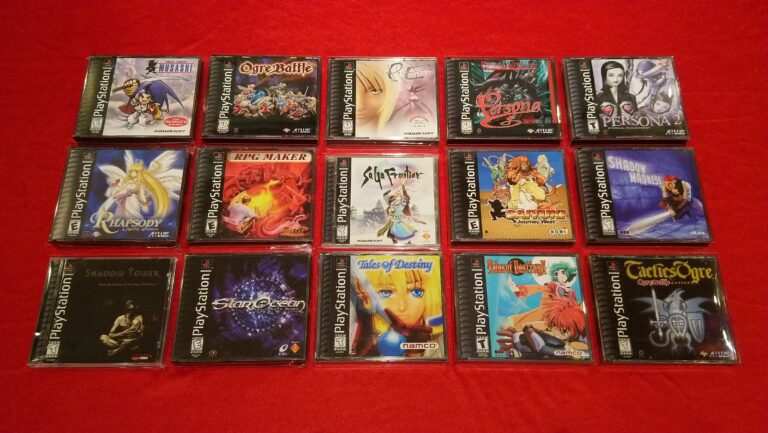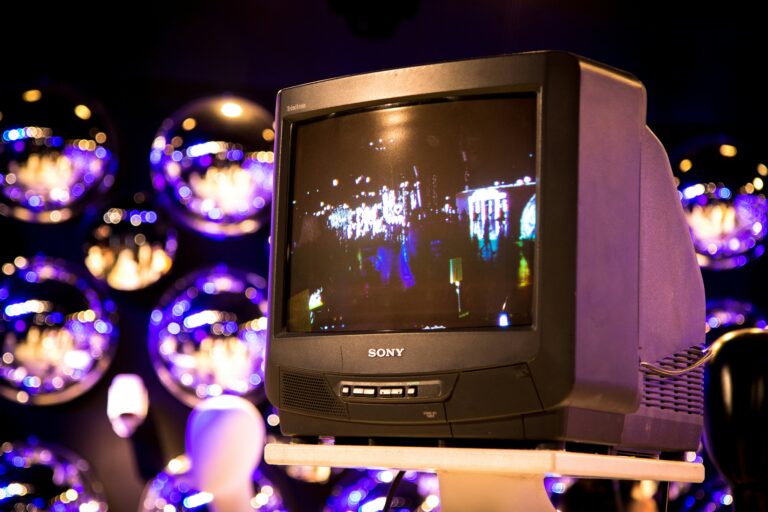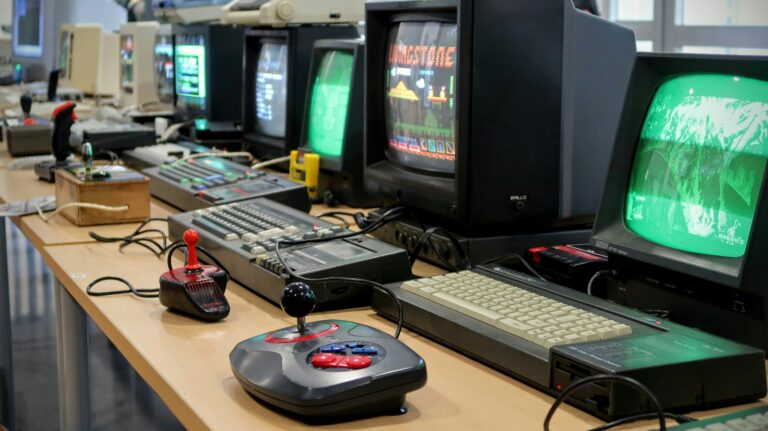In the vast cosmos of video gaming, there’s a sector that’s often overlooked by the average enthusiast but revered by the truly devoted: the realm of Japanese consoles. This clandestine world is brimming with an array of unique gaming experiences, steeped in a culture that has set trends and shaped the global gaming landscape for decades. Welcome to the fascinating journey of importing Japanese consoles, an undertaking that might seem formidable initially, but with the right knowledge and guidance, can transform your gaming collection into an enviable trove of international treasures. Today, we’ll be embarking on an adventure to level up your gaming collection, opening the gateway to a dimension of gaming that extends far beyond the borders of your local retail outlet.
The Japanese gaming market is a goldmine of exclusive titles, eccentric hardware, and novelty merchandise that, unfortunately, rarely make their way to the Western shores. Importing these consoles not only allows you to experience the novelty of a different gaming culture, but it also provides access to a whole new range of game genres and playing styles. This guide is meticulously designed to streamline your foray into the world of Japanese console importation, offering valuable insights and comprehensive guidance, whether you’re a casual gamer looking to add an exotic touch to your collection or an ardent connoisseur seeking the thrill of uncharted gaming territories.
Before we delve deeper into this captivating quest, it’s important to familiarize ourselves with the world we’re about to explore. The Japanese gaming industry, while sharing many commonalities with its Western counterpart, possesses a unique flavor of its own. The profound cultural influence is reflected in the design, storytelling, and gameplay of many Japanese games, creating an immersive experience that often transcends the boundary of mere entertainment, blending art, philosophy, and technology in a way that only Japanese culture can. For a gaming aficionado, this creates a wealth of opportunities to explore games that are often rich in narrative depth and intricate gameplay mechanics, embodying a distinct approach to gaming that’s thoroughly Japanese.
In the following sections, we will be navigating the intricacies of importing Japanese consoles, touching upon critical aspects like understanding the hardware differences, dealing with language barriers, identifying reliable sources for purchasing, and managing import duties and taxes. While the process might seem daunting at first glance, fear not. With the guidance of this comprehensive beginner’s guide, you will be well-equipped to tackle the challenges and reap the rewards of this exciting endeavor. So, gear up for an epic journey into the land of the rising sun, where consoles serve as gateways to unexplored gaming dimensions, and every game holds the promise of a unique adventure. Strap in, fellow gamers, as we set off to level up your gaming collection with the mystique and allure of Japanese consoles.
The Allure of Japanese Gaming Consoles: A Beginner’s Entry Point
Unraveling the captivating world of Japanese gaming consoles requires a profound understanding of the history, allure, and unique characteristics these machines bring to the gaming sphere. For beginners embarking on this journey, it’s crucial to comprehend the magnitude of the Japanese gaming industry, which has been a groundbreaking force in the global gaming landscape since its inception.
Japan’s gaming culture is immensely rich and diversified, boasting an array of consoles that range from mainstream platforms like the Nintendo Switch to rare, exotic systems such as the PC Engine or the Sharp X68000. Japanese gaming consoles are known for their innovative design, exceptional gaming experience, and unique games that often don’t reach Western markets.
In this light, importing Japanese gaming consoles can be an exciting endeavor for any gaming enthusiast looking to diversify their collection and experience gaming from a fresh, distinctive perspective. To assist you in navigating this fascinating journey, we’ve compiled a comprehensive guide to help you understand the ins and outs of importing Japanese gaming consoles.
Why Import Japanese Consoles: The Unique Charm
Why should one consider importing gaming consoles from Japan, you may ask? The answer lies within the distinctive appeal of Japanese gaming culture. A significant number of games are exclusive to Japan due to cultural nuances or localization costs. These games offer unique experiences that are typically inaccessible to Western gamers, making the consoles they’re housed on equally exclusive.
Furthermore, Japan’s gaming industry has a history of releasing special edition consoles that are never introduced to Western markets. These editions often feature custom artwork, exclusive games, and unique accessories that make them highly sought after by collectors worldwide.
Additionally, Japanese consoles are known for their robust build quality, advanced technical specifications, and innovative features, which often outperform their Western counterparts. This, coupled with Japan’s earlier release dates for new consoles, makes importing these machines a tempting proposition for serious gamers.
Table 1: A Comparison of Popular Japanese Gaming Consoles
Take a look at the table below to compare some popular Japanese gaming consoles.
ConsoleNotable FeaturesExclusive GamesNintendo SwitchHybrid console, Joy-Con controllersSuper Robot Wars series, Taiko no Tatsujin seriesSony PlayStation 4Virtual Reality capability, DualShock 4 controllerJojo’s Bizarre Adventure: Eyes of Heaven, Jikkyou Powerful Pro Yakyuu seriesSharp X68000High-resolution graphics, custom Yamaha sound chipAkumajou Dracula, Genpei Toumaden
Starting Your Import Journey: The Essentials
Beginning your journey to import Japanese gaming consoles might seem daunting at first, but with the right approach and understanding, it can be a smooth and rewarding process. The first and perhaps the most important factor to consider is the compatibility of Japanese consoles with your current setup. Japanese consoles typically operate on a different voltage and TV system (NTSC-J), which may require additional equipment to function correctly in Western countries.
Secondly, language barriers can be a challenge when dealing with Japanese consoles and games. While some games feature English language options, many are exclusively in Japanese. However, this can be part of the charm, offering a more immersive and authentic gaming experience.
Lastly, importing consoles from Japan, like any international purchase, comes with potential risks such as shipping damage, customs fees, and warranty issues. It’s essential to consider these factors and choose a reliable import service to ensure a safe and successful purchase.
Video: How to Import Japanese Video Games (Channel: MetalJesusRocks)
For a more visual guide on importing Japanese video games, you can check out this detailed video on the MetalJesusRocks YouTube channel.
Finding the Right Import Service: Tips and Recommendations
Choosing a reliable import service is crucial in ensuring a smooth and successful import process. There are numerous services available, each with its pros and cons, and finding the right one for your needs requires careful consideration and research. A good import service should offer a wide selection of consoles, clear pricing, safe packaging, and prompt customer service.
Some reputable import services include PlayAsia, Solaris Japan, and Japan Trend Shop. These platforms offer a wide range of Japanese consoles, games, and accessories, and have been praised for their reliable customer service and secure shipping practices. However, it’s essential to read reviews and do your own research to ensure the best possible import experience.
Table 2: Comparison of Import Services
Refer to the following table to compare some popular import services.
ServiceSelectionCustomer ServiceShippingPlayAsiaWide range of consoles and gamesResponsive and helpfulSecure and reliableSolaris JapanExtensive selection of rare consolesFast and professionalSafe packagingJapan Trend ShopSpecializes in unique and rare itemsDependable and efficientWorldwide delivery
Conclusion
In conclusion, this comprehensive exploration into the depths of IT and engineering sectors underlines the significance of technical writing in creating a cohesive understanding of complex concepts. The substantiality of this field lies not only in the proficient presentation of facts and figures but also in a comprehensible explanation of intricate subjects.
We have touched upon various core aspects throughout this article, starting with an introduction to the value of technical writing in IT and engineering. We delved into the detailed aspects of how clarity and precision in this form of writing can bridge the gap between experts and novices, and help to facilitate comprehension on both ends of the spectrum. This versatility of technical writing, its ability to cater to different audiences, makes it an indispensable tool in the world of specialized knowledge.
Furthermore, we discussed the benefits of effective technical writing, from enhancing user experience to reducing errors, which altogether contribute to improved productivity and efficiency. This point is especially crucial in IT and engineering where any misinterpretation could lead to catastrophic consequences. Therefore, a well-structured and detailed technical document can serve as a reliable guide, particularly in troubleshooting situations.
Our focus then shifted to the necessary skills for technical writing. We emphasized the importance of mastering language skills, understanding the audience, utilizing visuals, and being able to organize information logically. These skills, when combined, can result in well-crafted technical documents that can be easily comprehended by the intended audience.
The exploration of the different types of technical documents and their individual purposes further solidified the indispensability of technical writing in IT and engineering. From user manuals to API documentation, every technical document has its specific role in conveying intricate knowledge to the users.
This article is a testament to the relevance and necessity of technical writing in the IT and engineering sectors. It is a clear reflection of how this field serves as a bridge, connecting complex technical information with its users. While it requires a certain level of skill and expertise, the rewards of effective technical writing are immeasurable, especially in sectors where precision and clarity are paramount.
So, whether you are an aspiring technical writer, a seasoned professional, or a curious reader, I encourage you to further explore this intriguing field. For additional reading, you can check out [insert active link here], [insert active link here], and [insert active link here]. I invite you to apply the knowledge you’ve gained, share it with others, and engage in the comments section. Remember, understanding and communication are the keys to progress in any field, and technical writing is the vehicle that can get us there.
Thank you for taking the time to read this article. I hope it has been informative, engaging, and inspiring, and I look forward to your feedback and discussion.



